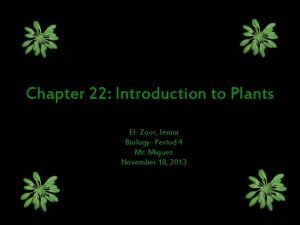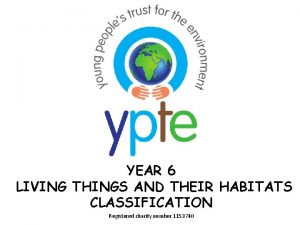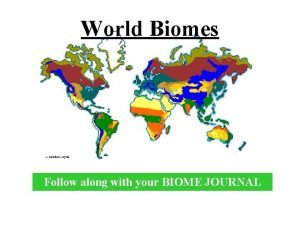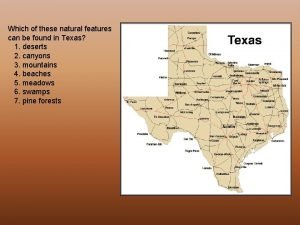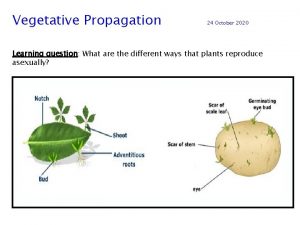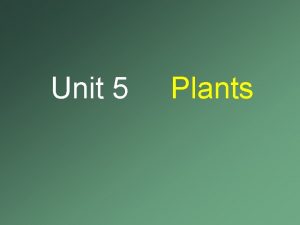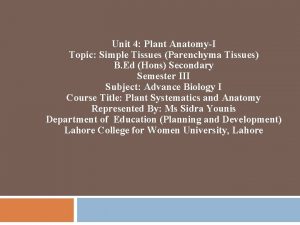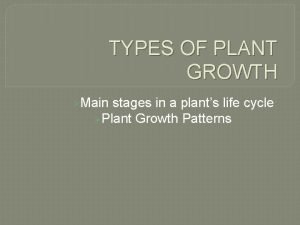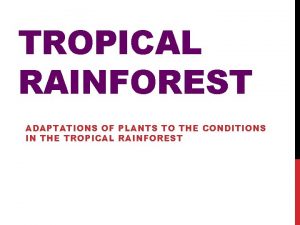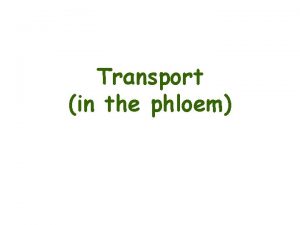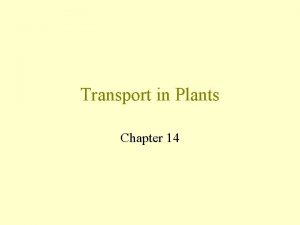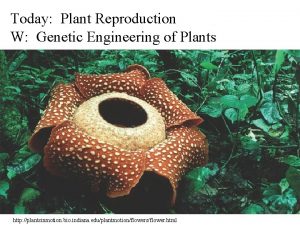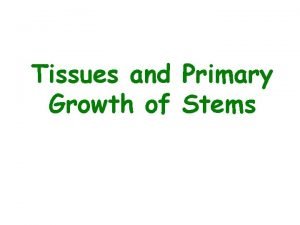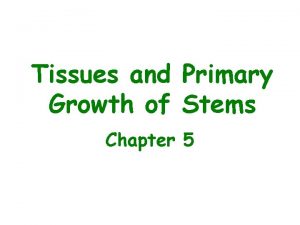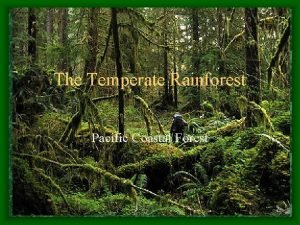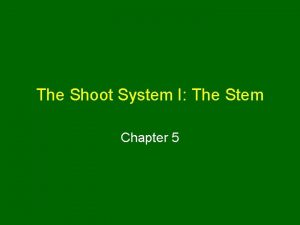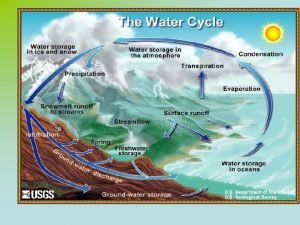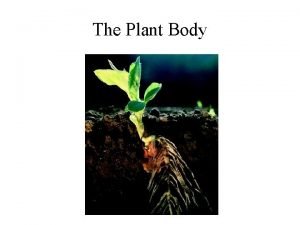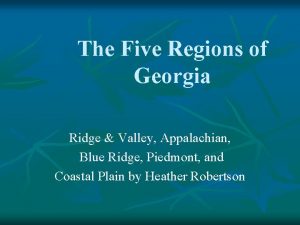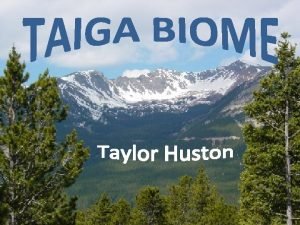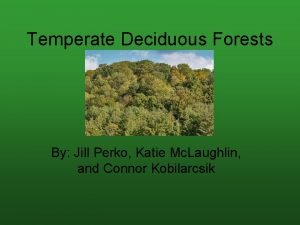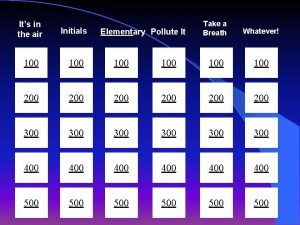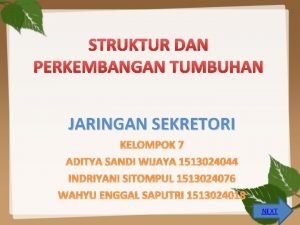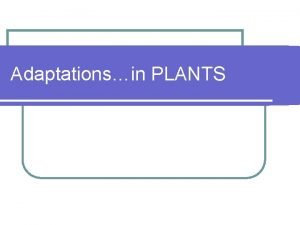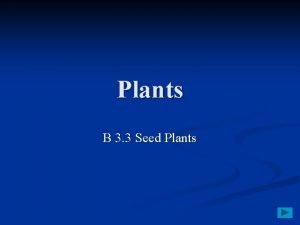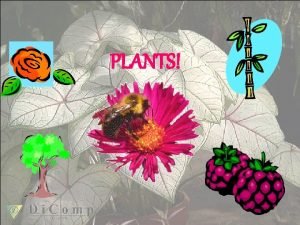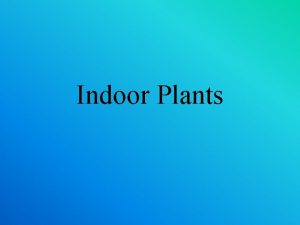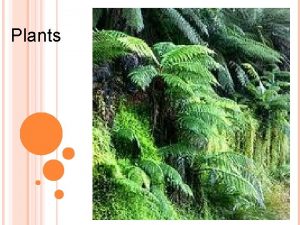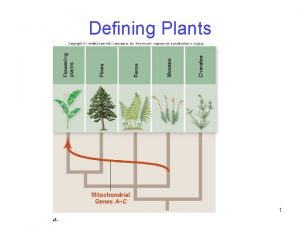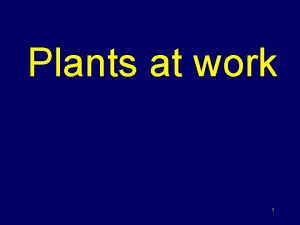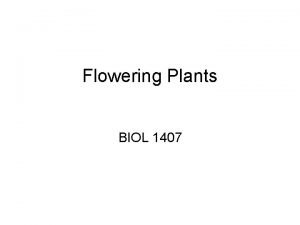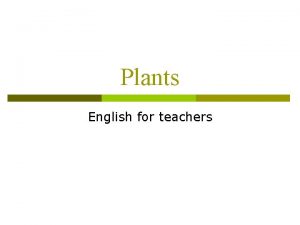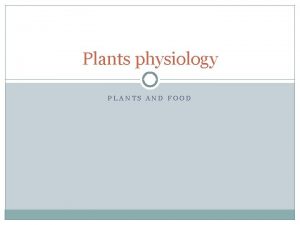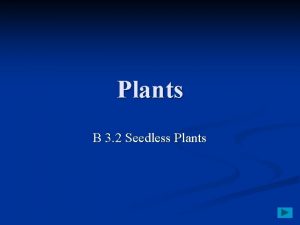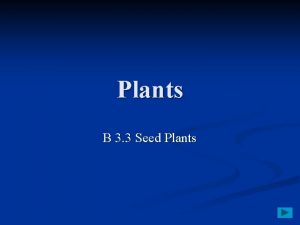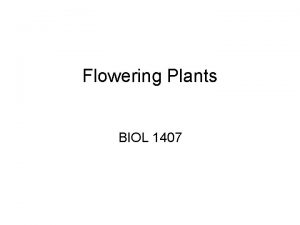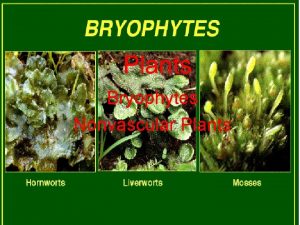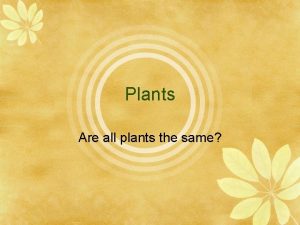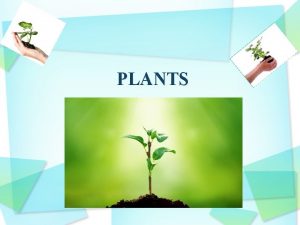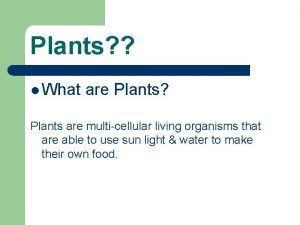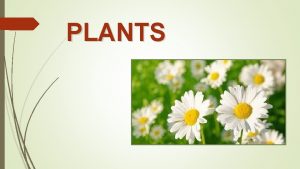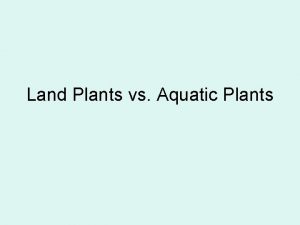Plants Chapter 8 What are Plants 1 Plants















































- Slides: 47

Plants Chapter 8

What are Plants? • 1. Plants are: • Multicellular • Eukaryotes • Cell walls (made of cellulose) • Mostly autotrophs

What are Plants? • 2. In order to survive on land: – Sunlight – Water and Minerals – Gas Exchange – Movement of water and Nurtients

• 3. The first plants evolved from an organism much like the mutlicellular green algae living today. What are Plants?

What are Plants? • 4. Botanists divide the plant kingdom into four groups based on: • Water-conducting tissue (Vascular Tissue) • Seeds • Flowers

Botan. Y The study of plants.

What are Plants? • Vascular Tissue: System of tube-like structures inside a plant which water, minerals and food move.

Plant Kingdom - Plantae • Using Figure 22 -7, answer the following questions. –Largest Group: Flowering Plants –Smallest Group: Cone-bearing plants –Mosses and relatives : 15, 600 species

Plant Groups

Bryophytes • Vascular Tissue: No vascular tissue • Where: Moist, shaded areas (polar to tropics) • Reproduction: Sexual reproduction water required • Examples: Mosses, liverworts and hornworts


Seedless Vascular Plants • Vascular Tissue: Have vascular tissue • Where: Moist woodlands and forest floors • Reproduction: Sexual reproduction • Examples: Club mosses, horsetails and ferns


Gymnosperm – Cone Bearers • Vascular Tissue: Have vascular tissue • Where: Tropics and subtropics, mountains, sandy soil and temperate rain forests • Reproduction: Sexual reproduction • Examples: Gnetophytes, cycads, ginkgoes and conifers Gymnosperm = “naked seed”


Angiosperm – Flowering Plants • Vascular Tissue: Have vascular tissue • Where: Almost anywhere • Reproduction: Sexual reproduction – With Flowers • Examples: Zinnias, apple trees, corn wheat, lilies and roses


Parts of a Plant

Parts of a Plant • Taller plants have a transport system called vascular tissue that allowed them to quickly transport water and nutrients. • Vascular tissue: System of tubelike structures inside a plant which water, minerals and food move.

Parts of a Plant • Two forms of vascular tissue: –Xylem: Transport Water –Phloem: Transport Food

Parts of a Plant • 3. Plants without vascular tissue don’t grow as tall because the vascular tissue adds stability. – No vascular tissue = less stable

4. Parts of a Flower

Part of a Plant Stems Roots Leaves Flowers Function Support system, transport system and defense system for a plant Anchors the plant to the ground absorbs water and nutrient Main photosynthetic system - Broad, flat leaves increase surface area for absorbing sun Reproductive organs


Fern Part of Fern Description Rhizome Underground stems Frond Large leaves Sori Clusters of sporangia (where spores are kept) Roots Underground system to collect water and nutrients


Seeded Plants • 7. Seeded plants are divided into two groups: – Gymnosperms: bear seeds directly on the surface of cones • Example: cycads and conifers – Angiosperm: bear their seeds within a layer of protective tissue • Example: Lilies and apple trees

Alteration of Generations • 8. Process in which many algae switch back and forth between haploid and diploid stages of their life cycle.


Seeded Plants • 9. Unlike mosses and ferns (seedless plants), seeded plants do not require water. (for fertilization)

Seeded Plants • 10. Seed-bearing structures on: • Gymnosperm: Cones • Angiosperm: Flowers

Seeded Plants • 11. Pollen grain: In seed plants, the entire male gametophyte is contained in this structure. • 12. Pollination occurs by wind, insects or small animals carrying the pollen.

Insect Pollination

Seeded Plants • 13. Seed coats are important because they surround or protect the seeds from drying out.

Seeded Plants • 14. Male cones in gymnosperms are called pollen cones. • 15. Female cones of a gymnosperm are called seed cones. • 16. We typically think of the seed cones (female).

Female Male

Seeded Plants • 17. The most common gymnosperm is the conifer.

Flowering Plants: Angiosperms

Flowering Plants • 18. Flowering plants have the advantage of using flowers to attract pollinators: – Animals (Bees, moths, and hummingbirds) • 19. Angiosperm means “ enclosed seed”.

• 20. The fruit of an angiosperm is a wall of tissue surrounding the seed. – Evolutionary adaptation: Animals eat the fruit, but “pass” the seeds right out. So…. easy dispersal! Flowering Plants

Flowering Plant • 21. There are two groups of angiosperms: –Monocotyledonae also known as Monocots –Dicotyledonae also known as Dicots

Monocots and Dicots

Monocot or Dicot? Monocot = 6 leaves

Monocot or Dicot? Monocot = Parallel Veins

Monocot or Dicot? Dicot = Branched Veins

Monocot or Dicot? Dicot = Two Cotyledons

Monocot or Dicot? Monocot = Fibrous Root
 Mikael ferm
Mikael ferm Vascular vs nonvascular plants
Vascular vs nonvascular plants Non vascular plants
Non vascular plants Examples of non flowering plants
Examples of non flowering plants Photosynthesis equation
Photosynthesis equation Chapter 22 introduction to plants worksheet answers
Chapter 22 introduction to plants worksheet answers The red tent summary chapter by chapter
The red tent summary chapter by chapter The great gatsby chapter 8 setting
The great gatsby chapter 8 setting Chapter 10 chemical reactions answer key
Chapter 10 chemical reactions answer key Chapter 11 stoichiometry study guide answer key
Chapter 11 stoichiometry study guide answer key Chapter 9 chemical reactions
Chapter 9 chemical reactions Means and extremes of proportions
Means and extremes of proportions Chapter 6 career readiness
Chapter 6 career readiness Chapter 7 ionic and metallic bonding chapter answer key
Chapter 7 ionic and metallic bonding chapter answer key Chapter 9 surface water answer key
Chapter 9 surface water answer key Chapter 2 representing motion chapter assessment
Chapter 2 representing motion chapter assessment Chapter 1 chapter assessment the central science
Chapter 1 chapter assessment the central science Chapter 7 ionic and metallic bonding chapter answer key
Chapter 7 ionic and metallic bonding chapter answer key Section 1 population dynamics answer key
Section 1 population dynamics answer key Chapter 2 chapter assessment
Chapter 2 chapter assessment Background of the book of philippians
Background of the book of philippians Properties of ionic compounds
Properties of ionic compounds Chemistry chapter 7 ionic and metallic bonding
Chemistry chapter 7 ionic and metallic bonding Tetraphosphorus octoxide formula
Tetraphosphorus octoxide formula Magnoliopsida order
Magnoliopsida order Taiga plants and adaptations
Taiga plants and adaptations Coastal sand plains
Coastal sand plains Plant reproduction
Plant reproduction Water balance in plants
Water balance in plants Vegetative propagation example
Vegetative propagation example 5 characteristics of plants.
5 characteristics of plants. Parenchyma in plants
Parenchyma in plants Monocarpic plants
Monocarpic plants Tropical rainforest adaptations
Tropical rainforest adaptations Sugar sink in plants
Sugar sink in plants Transpiration in plants
Transpiration in plants How do plants reproduce
How do plants reproduce Interfascicular cambium is primary or secondary
Interfascicular cambium is primary or secondary Function of stems
Function of stems Temperate rainforest indicator plants
Temperate rainforest indicator plants Shoot system
Shoot system Evaporation in plants is called
Evaporation in plants is called Apical dominance
Apical dominance Valley and ridge region of georgia animals
Valley and ridge region of georgia animals Description of a taiga
Description of a taiga Deciduous forest climate
Deciduous forest climate Do plants breathe
Do plants breathe Struktur jaringan sekretori
Struktur jaringan sekretori





